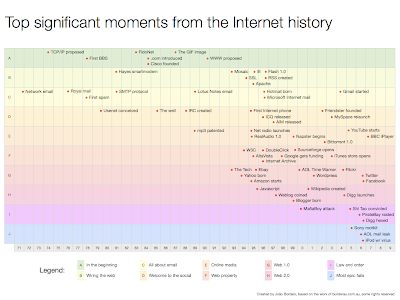The concept of data communication - transmitting data between two different places, connected via some kind of electromagnetic medium, such as radio or an electrical wire - actually predates the introduction of the first computers. Such communication systems were typically limited to point to point communication between two end devices. Telegraph systems and telex machines can be considered early precursors of this kind of communication. The earlier computers used the technology available at the time to allow communication between the central processing unit and remote terminals. As the technology evolved new systems were devised to allow communication over longer distances (for terminals) or with higher speed (for interconnection of local devices) that were necessary for the mainframe computer model. Using these technologies it was possible to exchange data (such as files) between remote computers. However, the point to point communication model was limited, as it did not allow for direct communication between any two arbitrary systems; a physical link was necessary. The technology was also deemed as inherently unsafe for strategic and military use, because there were no alternative paths for the communication in case of an enemy attack.
As a response, several research programs started to explore and articulate principles of communications between physically separate systems, leading to the development of the packet switching model of digital networking. These research efforts included those of the laboratories of Vinton G. Cerf at Stanford University, Donald Davies (NPL), Paul Baran (RAND Corporation), and Leonard Kleinrock at MIT and at UCLA. The research led to the development of several packet-switched networking solutions in the late 1960s and 1970s, including ARPANET, Telenet, and the X.25 protocols. Additionally, public access and hobbyist networking systems grew in popularity, including unix-to-unix copy (UUCP) and FidoNet. They were however still disjointed separate networks, served only by limited gatewaysbetween networks. This led to the application of packet switching to develop a protocol for internetworking, where multiple different networks could be joined together into a super-framework of networks. By defining a simple common network system, the Internet Protocol Suite, the concept of the network could be separated from its physical implementation. This spread of internetworking began to form into the idea of a global network that would be called the Internet, based on standardized protocols officially implemented in 1982. Adoption and interconnection occurred quickly across the advanced telecommunication networks of the western world, and then began to penetrate into the rest of the world as it became the de-facto international standard for the global network. However, the disparity of growth between advanced nations and the third-world countries led to a digital divide that is still a concern today.
Following commercialization and introduction of privately run Internet service providers in the 1980s, and the Internet's expansion for popular use in the 1990s, the Internet has had a drastic impact on culture and commerce. This includes the rise of near instant communication by electronic mail (e-mail), text based discussion forums, and the World Wide Web. Investor speculation in new markets provided by these innovations would also lead to the inflation and subsequent collapse of theDot-com bubble. But despite this, the Internet continues to grow, driven by commerce, greater amounts of online information and knowledge and social networking known as Web 2.0.


